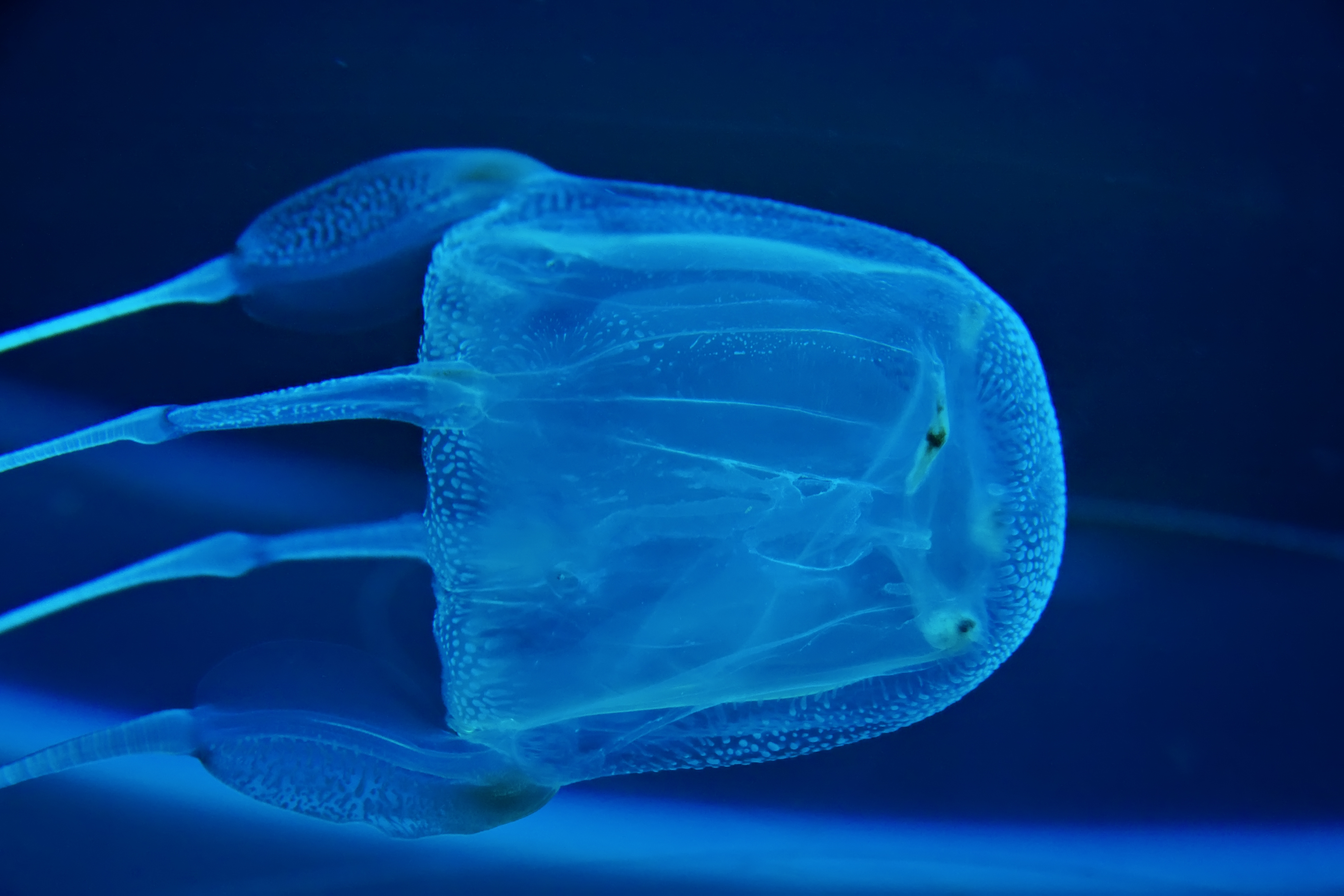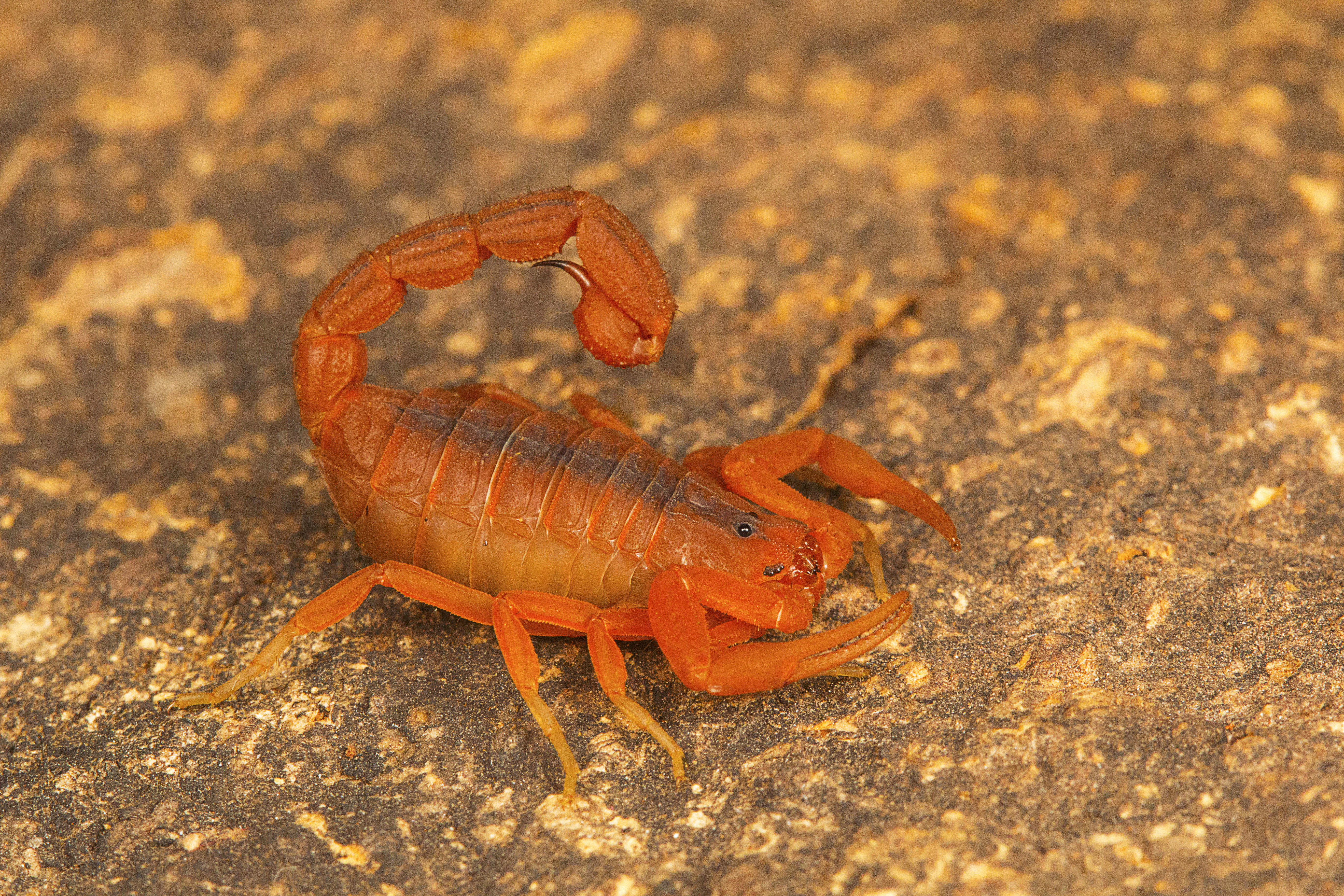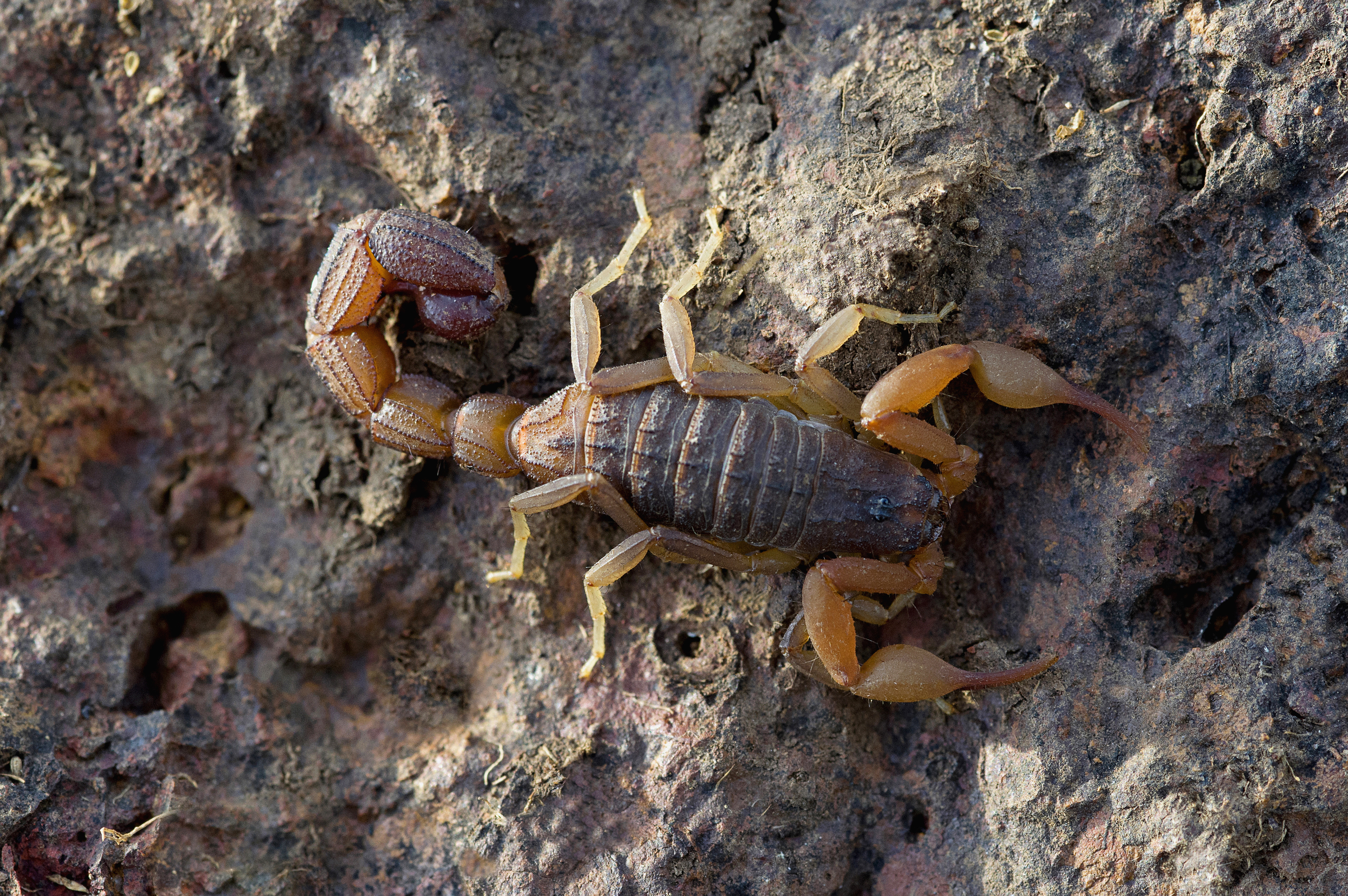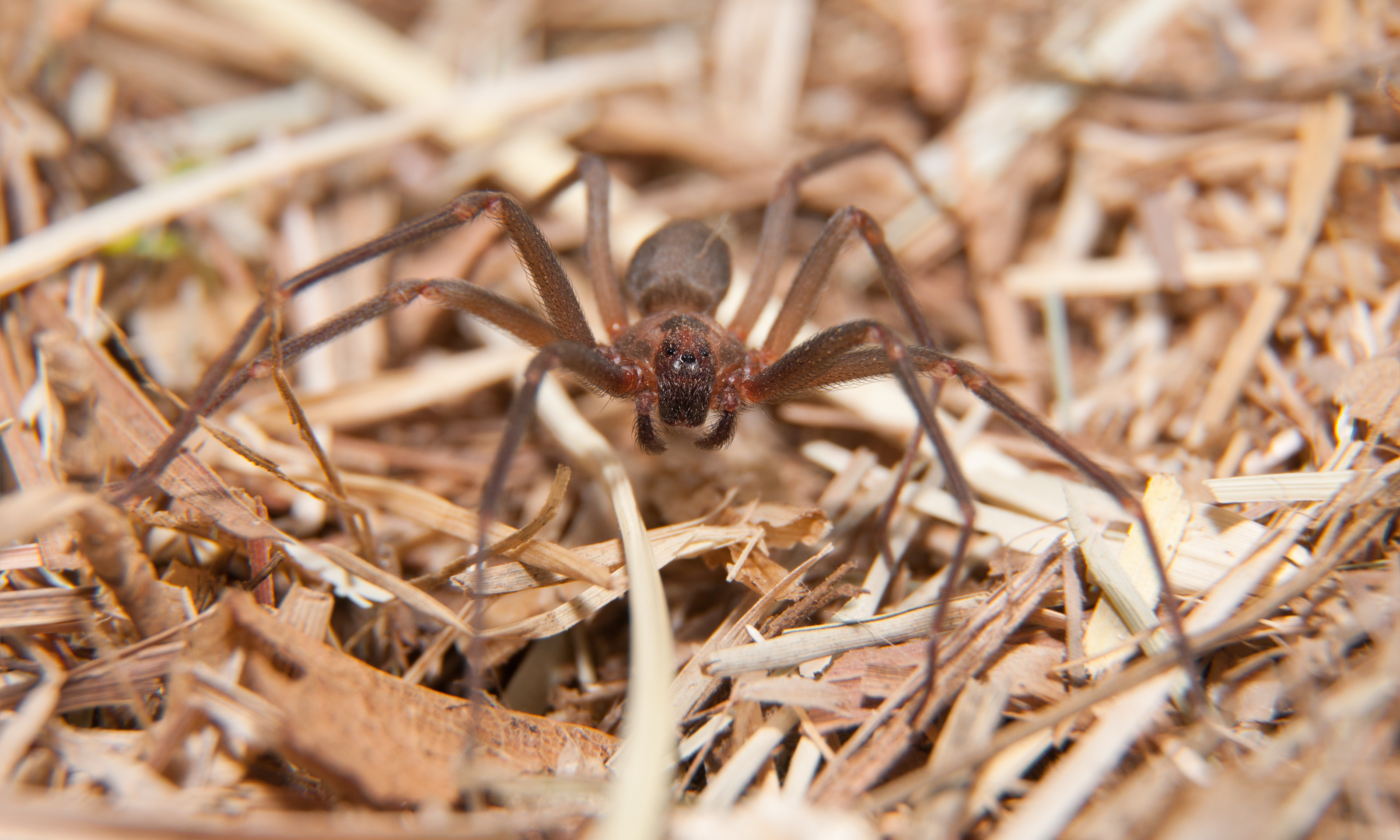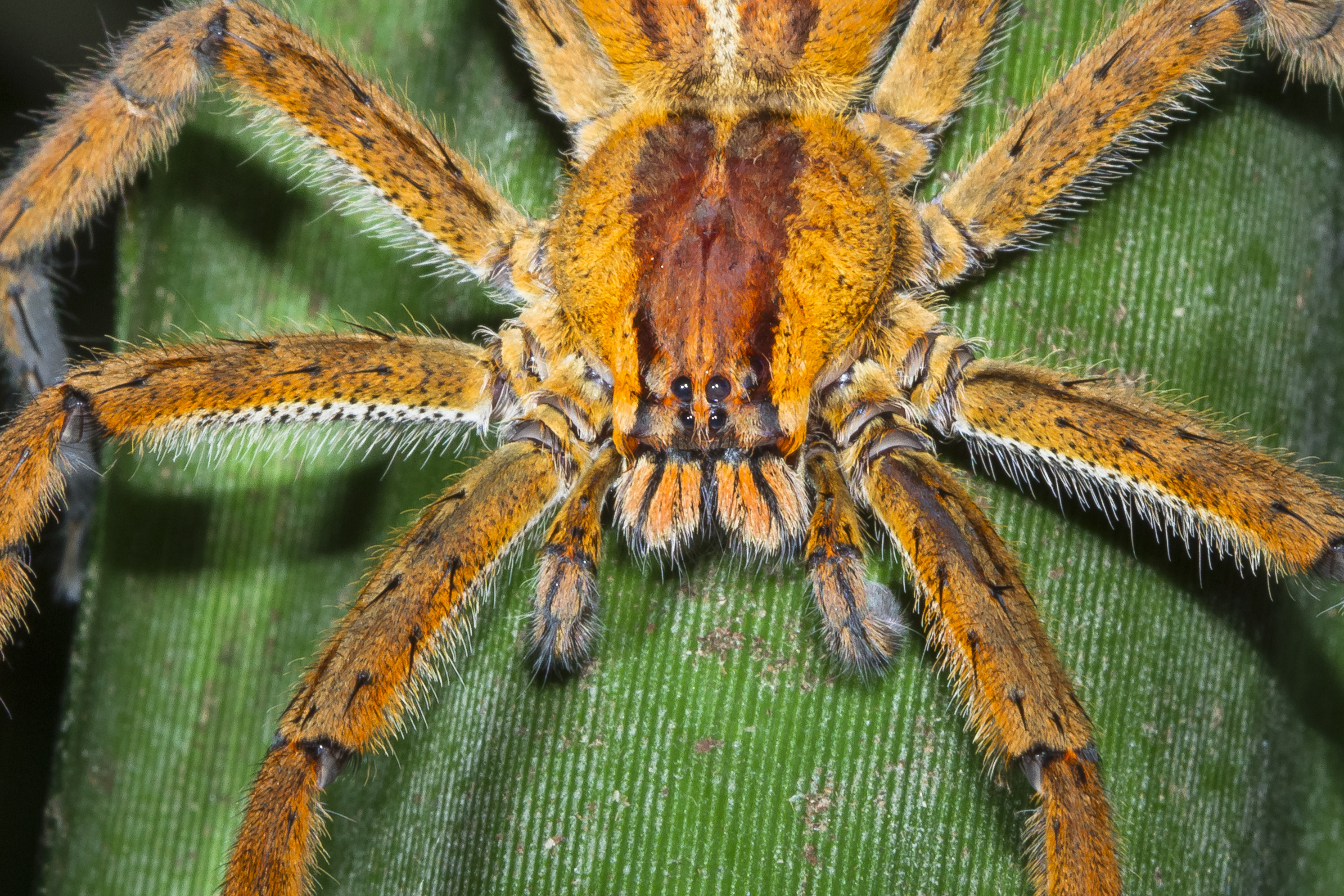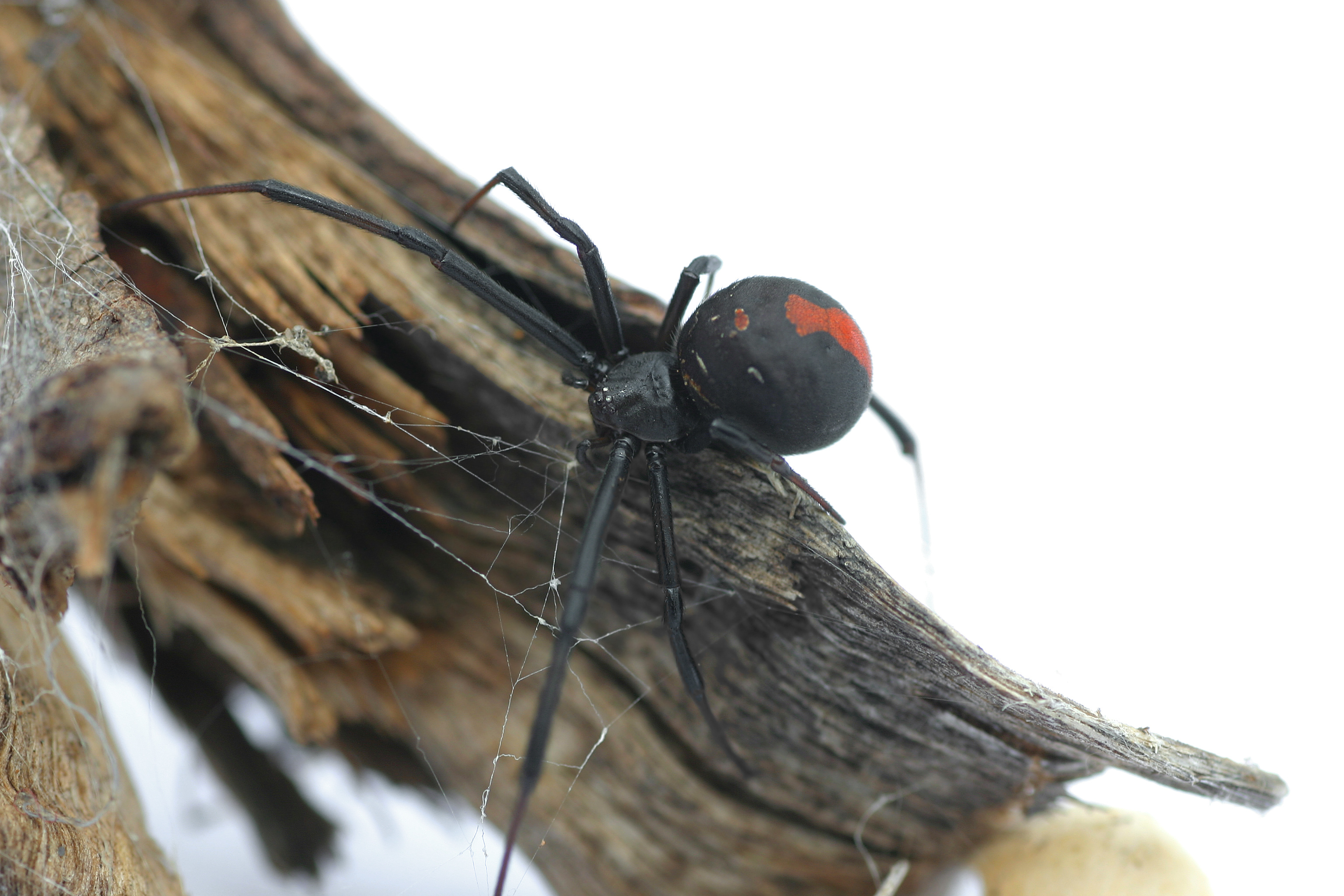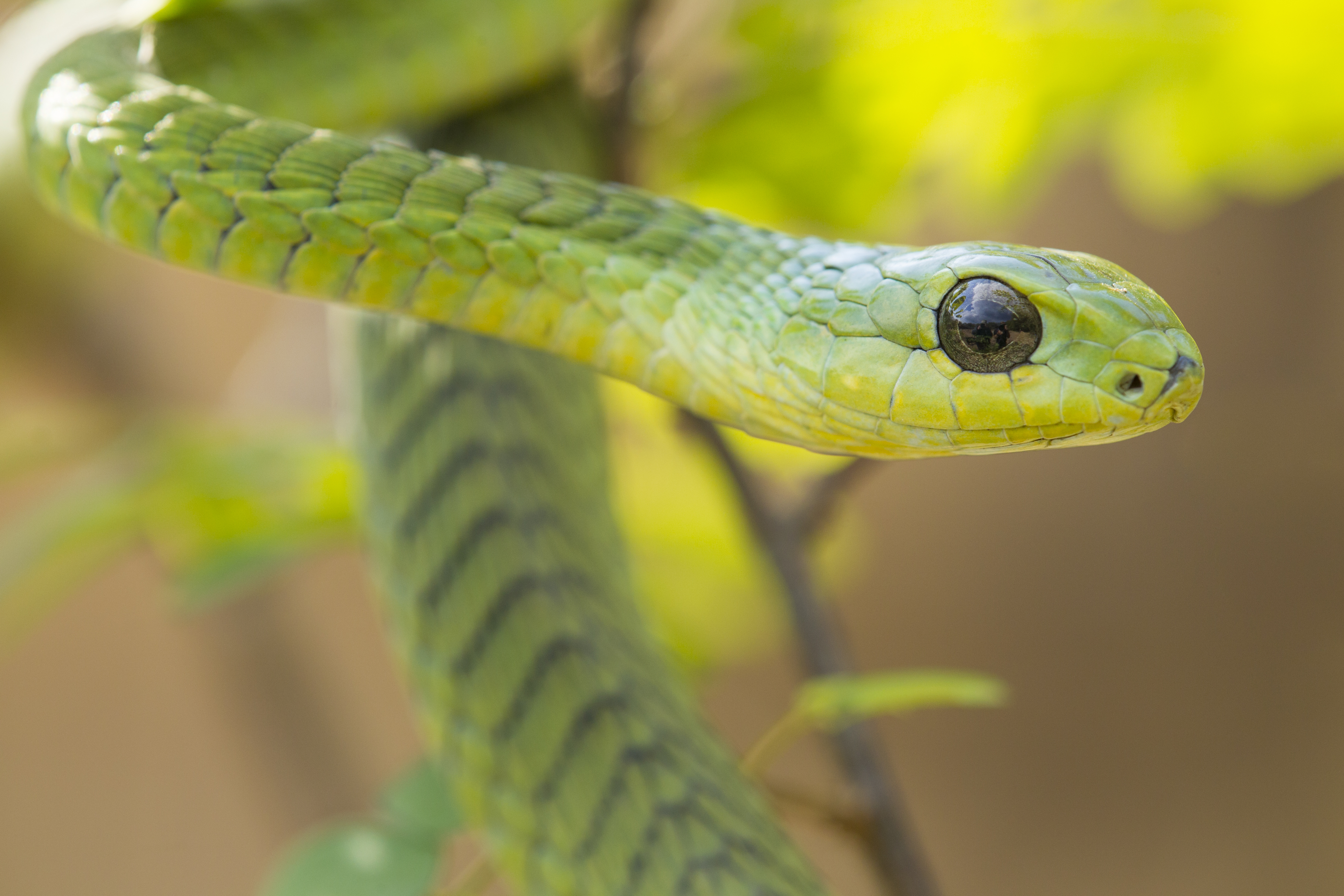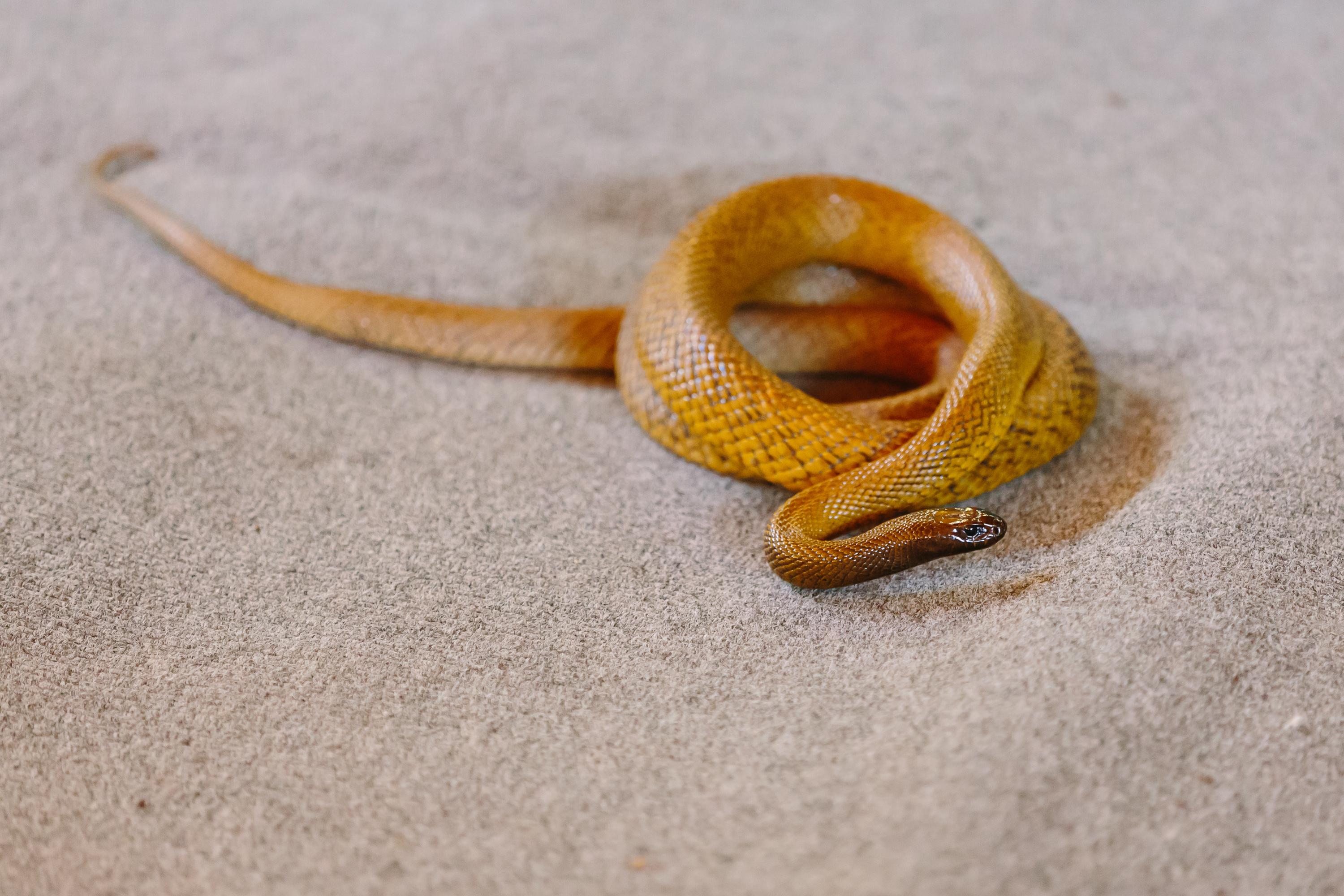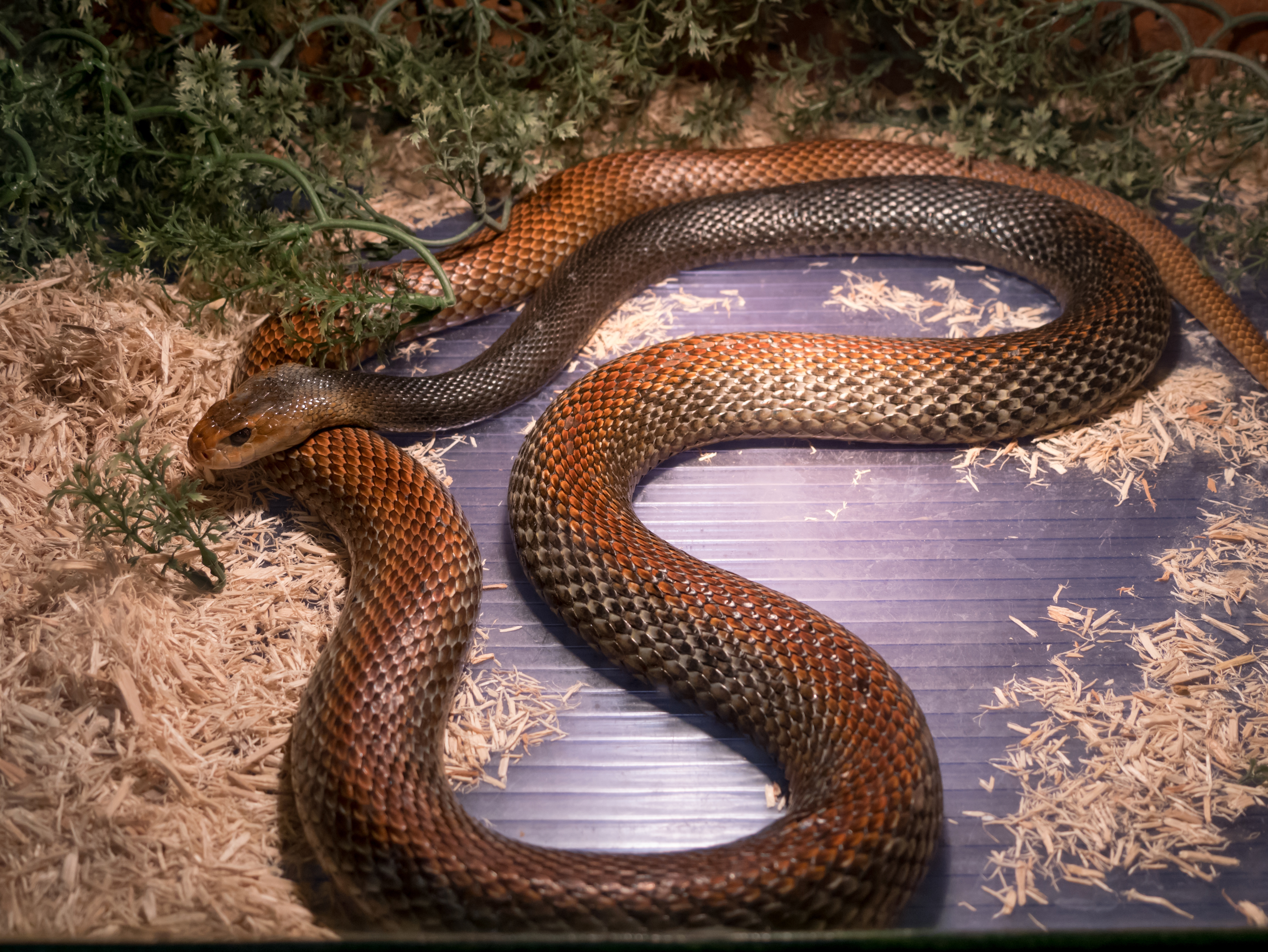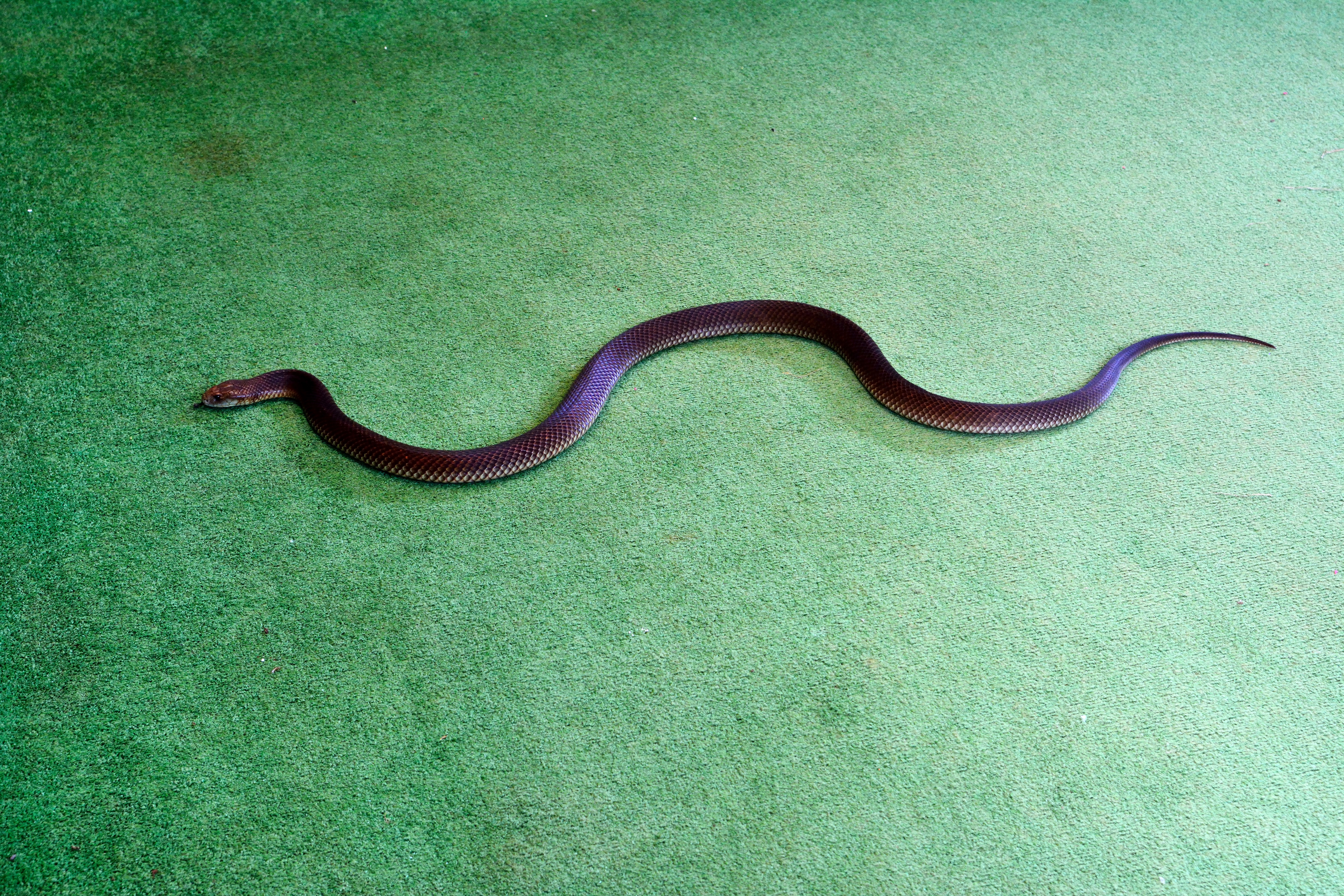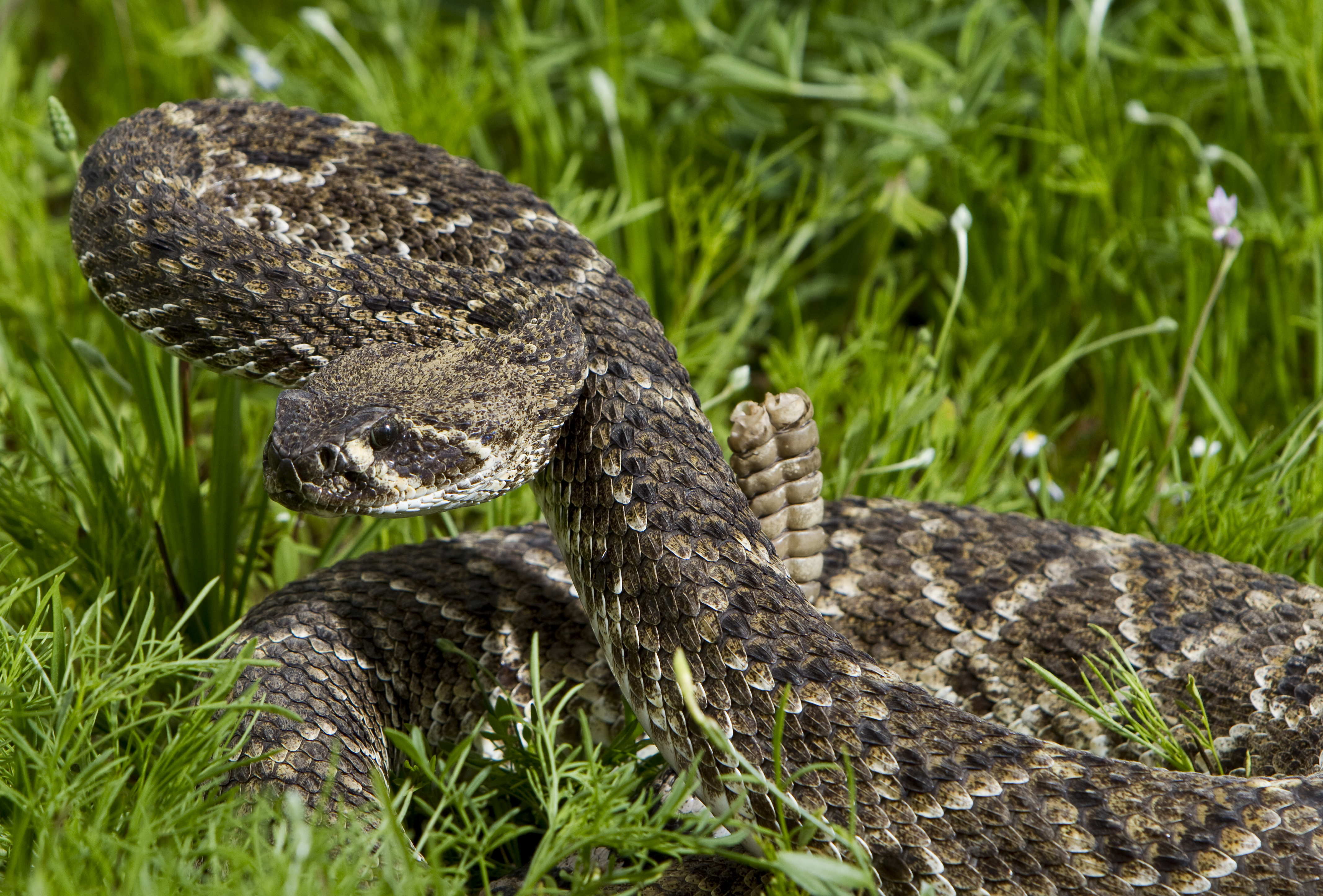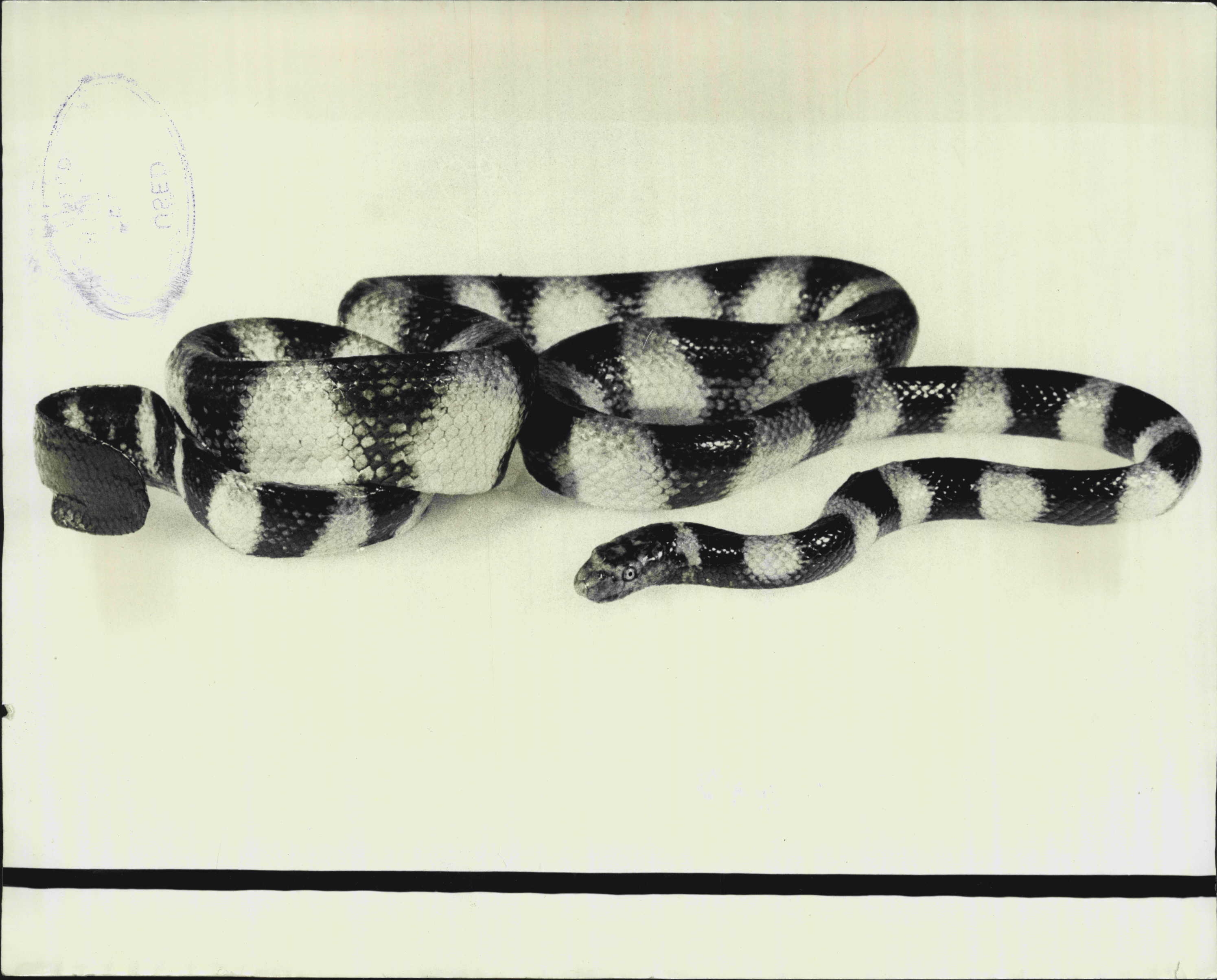The fierce honey badger don’t care. But the honey badger doesn’t have the venom of the following killer creatures. Here are the most venomous animals in the world grouped by type. (Get ready to shudder.) You might not be surprised that snakes make up the majority of animals on this list.
Note: Venomous means that the animal delivers its poison to its victim via biting, shooting, spitting or some other method. Poisonous means that the animal itself contains toxins but doesn’t necessarily attack. We’ve included a few particularly toxic, poisonous animals on this list among the venomous ones, for example…
Golden Poison Frog
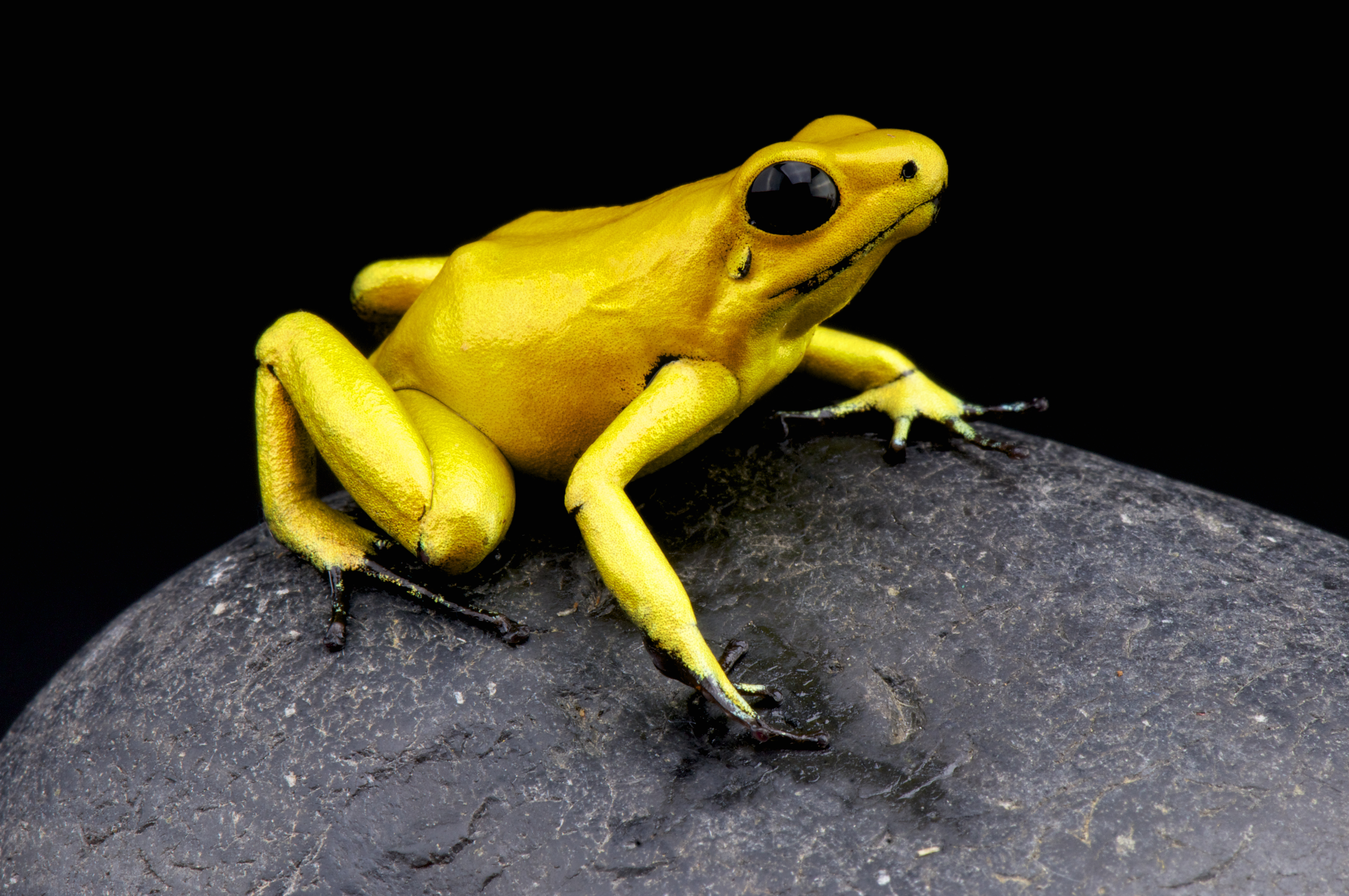
This small yellow frog found in Colombia is much too dangerous to touch. One Golden Poison Frog has enough poison in it to kill 10 men, according to National Geographic, and it can kill within 10 minutes, making it one of the most toxic frogs in the world. This and other types of toxic-to-the-touch frogs are sometimes called “poison dart” frogs because indigenous tribes have used the frog’s poison to coat their darts and arrows for hunting.
Maricopa Harvester Ant
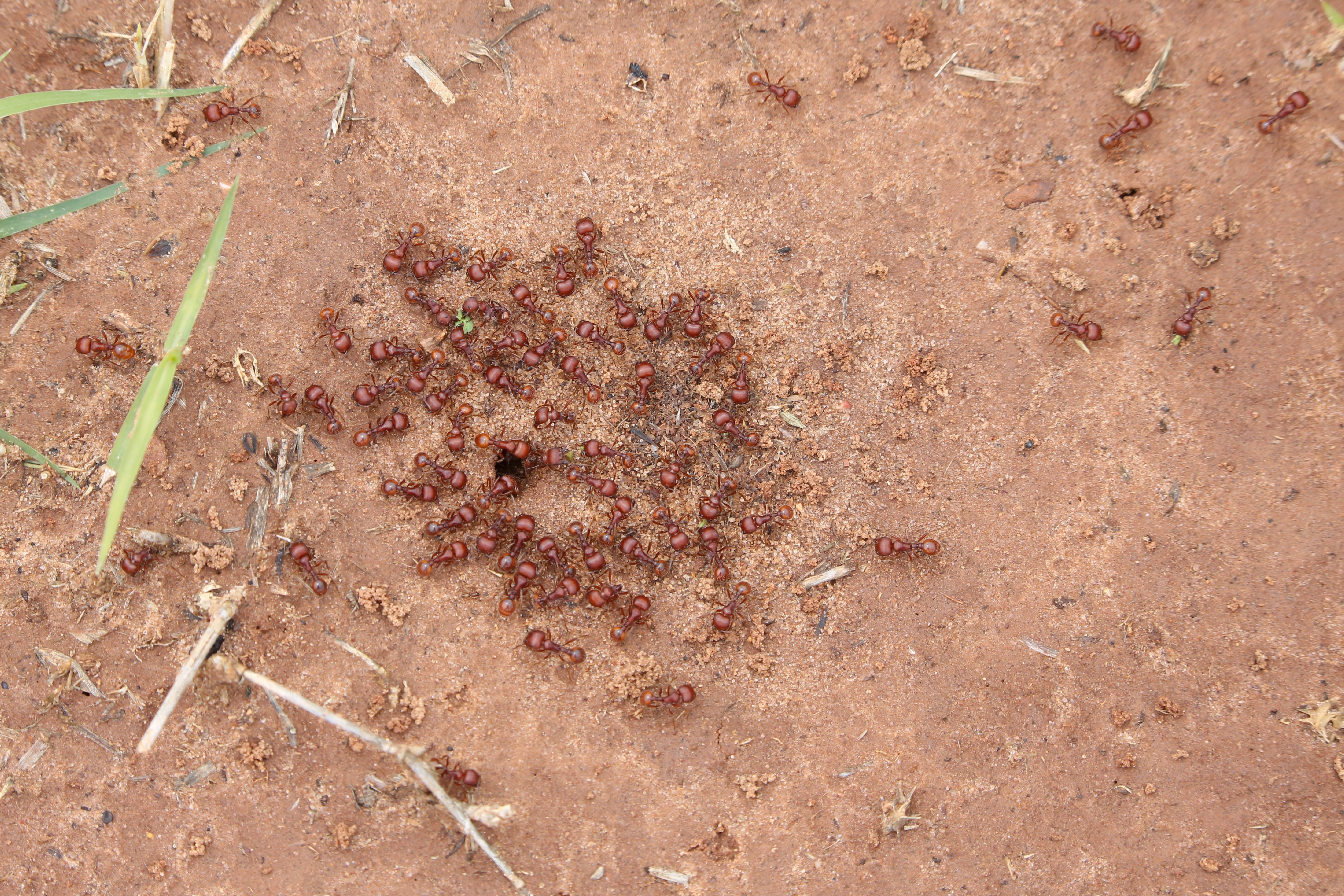
According to most research, the most toxic insect is the Maricopa Harvester Ant. The ant is found primarily in the southwestern part of the U.S. and in Mexico. Harvester ants are highly toxic in general but the “Pogonomyrmex maricopa” variety has the highest level of venom.
According to the University of Florida, 12 stings from a Maricopa Harvester Ant can kill a 4-pound rat! And a human stung by these ants will be in pain for several hours.
Fat-Tailed Scorpion
The fat-tailed or fattail scorpion is actually the name given to a group of scorpions under the genus Androctonus. They are distinguished by their wider than usual stinging tails. These are some of the deadliest scorpions in the world and are found in parts of the Middle East and North Africa. They can be various colors and are often aggressive. Interestingly enough, the venom from the fattail scorpion is being adapted as a treatment for a type of brain cancer.
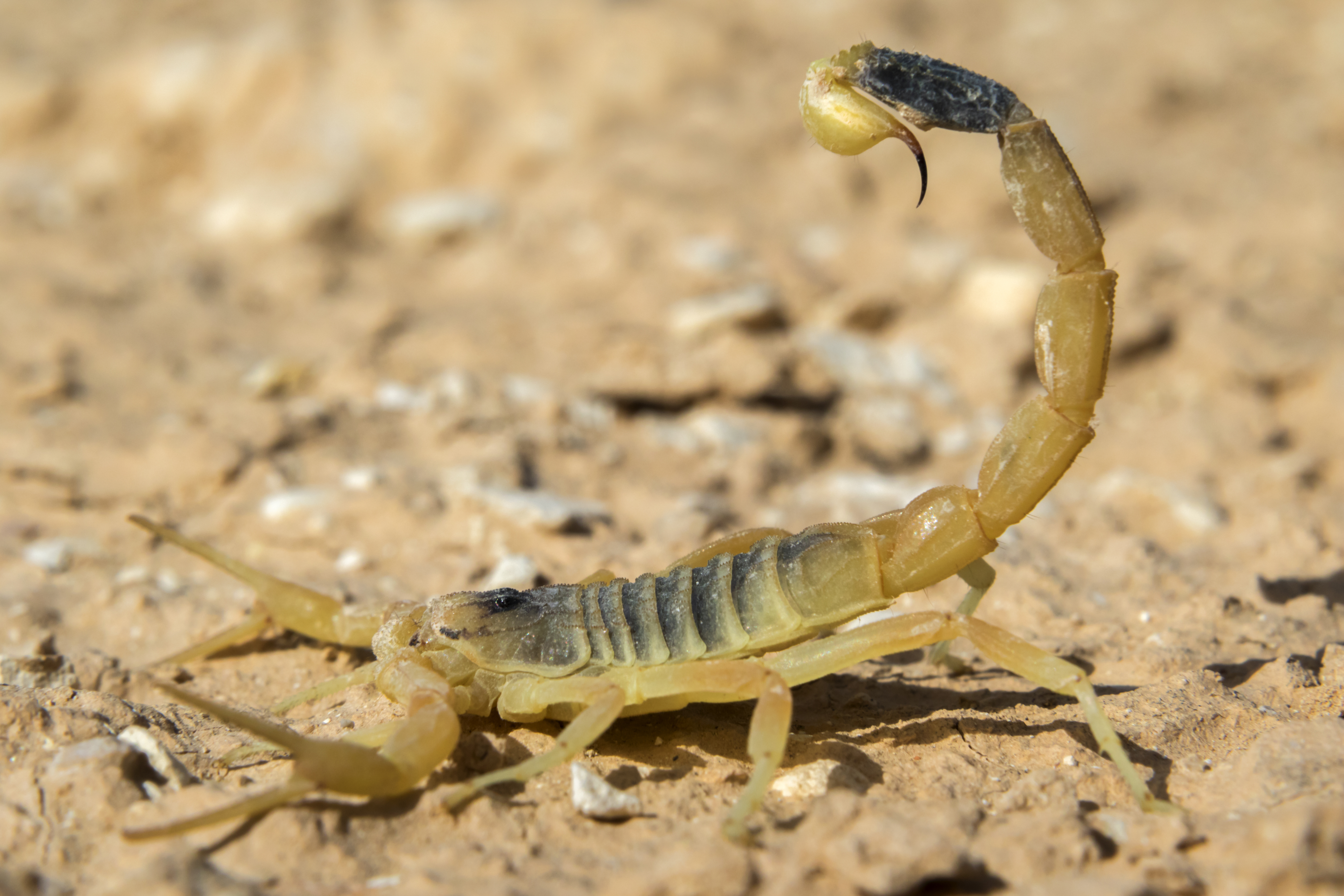
Deathstalker Scorpion
With a name like Deathstalker, you know this scorpion isn’t messing around. This particular scorpion is also sometimes called the Israeli Yellow Scorpion because it’s found in Israel as well as in other parts of the Middle East and in North Africa. It’s also got the fastest stinging action according to a study that clocked a swipe of a Deathstalker at 3 miles per hour.
Indian Red Scorpion
The Indian Red Scorpion has been labeled the most deadly scorpion on the planet. They are found in India, Pakistan, Nepal and Sri Lanka. They are also smaller than many scorpions and not aggressive toward humans unless provoked. However, if you get stung by the Indian Red, it can be fatal to humans, especially children, without treatment.
Brown Recluse Spider
If you live in the south or central parts of the U.S., you’ll want to be on the lookout for the Brown Recluse Spider, a highly toxic house spider that is often found where people are, just hiding out under and behind things. In fact, your house could get infested with them. This spider also lives in southern Europe, Africa and North, Central and South America. People react differently to their bite, but there is no antivenom for them.
Brazilian Wandering Spider
The Brazilian Wandering Spider causes painful bites with serious side effects. Aside from the typical side effects of a highly toxic spider bite, this spider has the unusual effect of causing lengthy erections. And yes, the venom has been looked into for the medical purpose of helping erectile dysfunction. The Guinness Book of World Records says this is the deadliest spider in the world, though a few other spider species seem to challenge that title, as seen below.
Australian Funnel-Web Spider
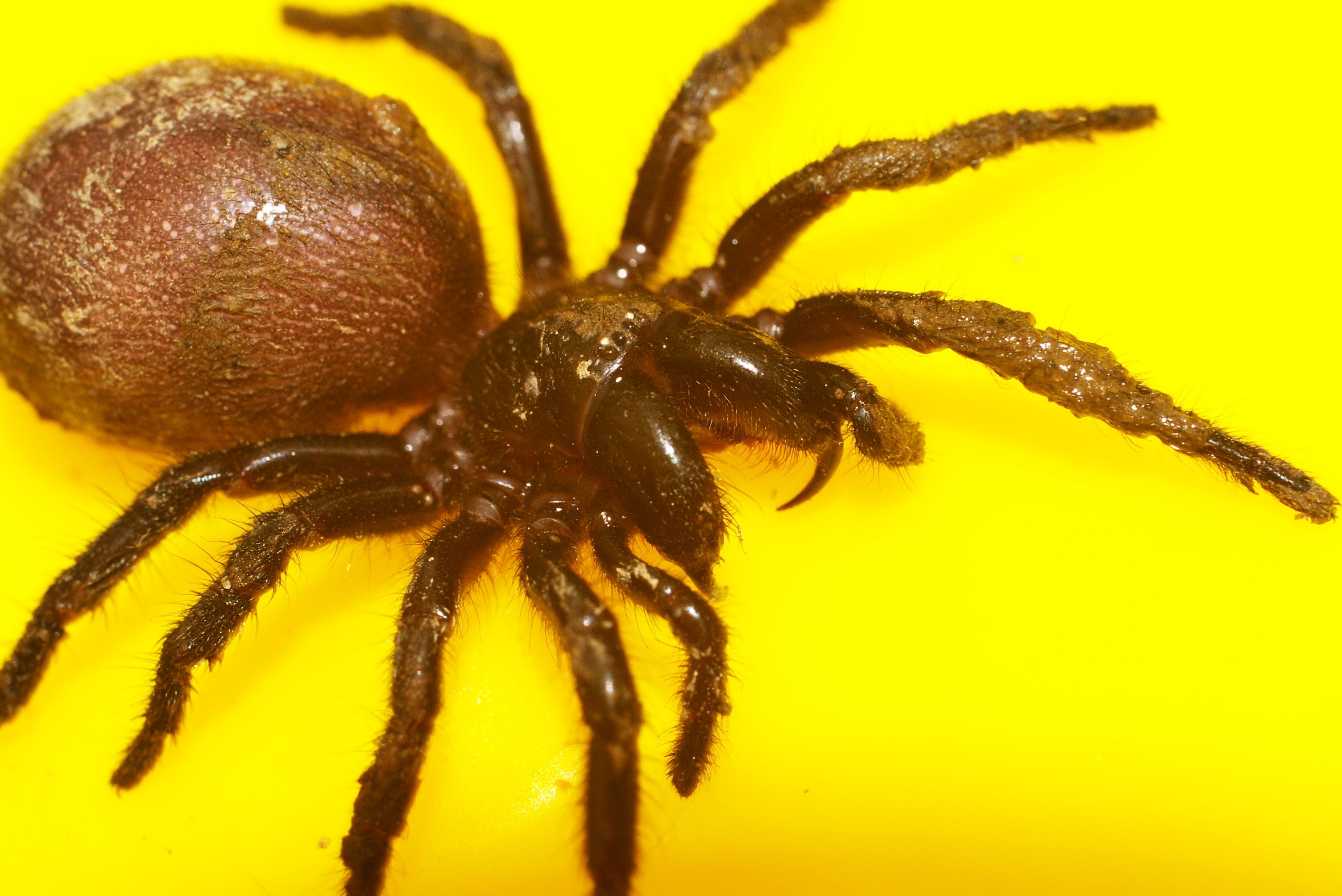
So named because it weaves a funnel-shaped spider web, funnel-web spiders can be deadly. Before anti-venom was created, the Sydney funnel-web spider killed 13 people. More than half of the funnel-web spider bites become serious, so treatment should be sought out.
Redback Spider
Ranking high on the deadly spider list is the Redback Spider, which — along with the funnel web spider — has strong and quick-acting venom. The Redback is considered more dangerous than some other spiders both because its venom is so powerful and because its bites are so common. At times, Australia has recorded some 10,000 bites a year. This spider has also been accidentally introduced to the United Arab Emirates, Britain, Japan and New Zealand.
Boomslang
This snake is deadly without treatment. It’s a tree dweller native to Africa that often pretends it’s a branch in order to trick its prey. The Boomslang’s venom causes extensive internal bleeding and often death without the anti-venom.
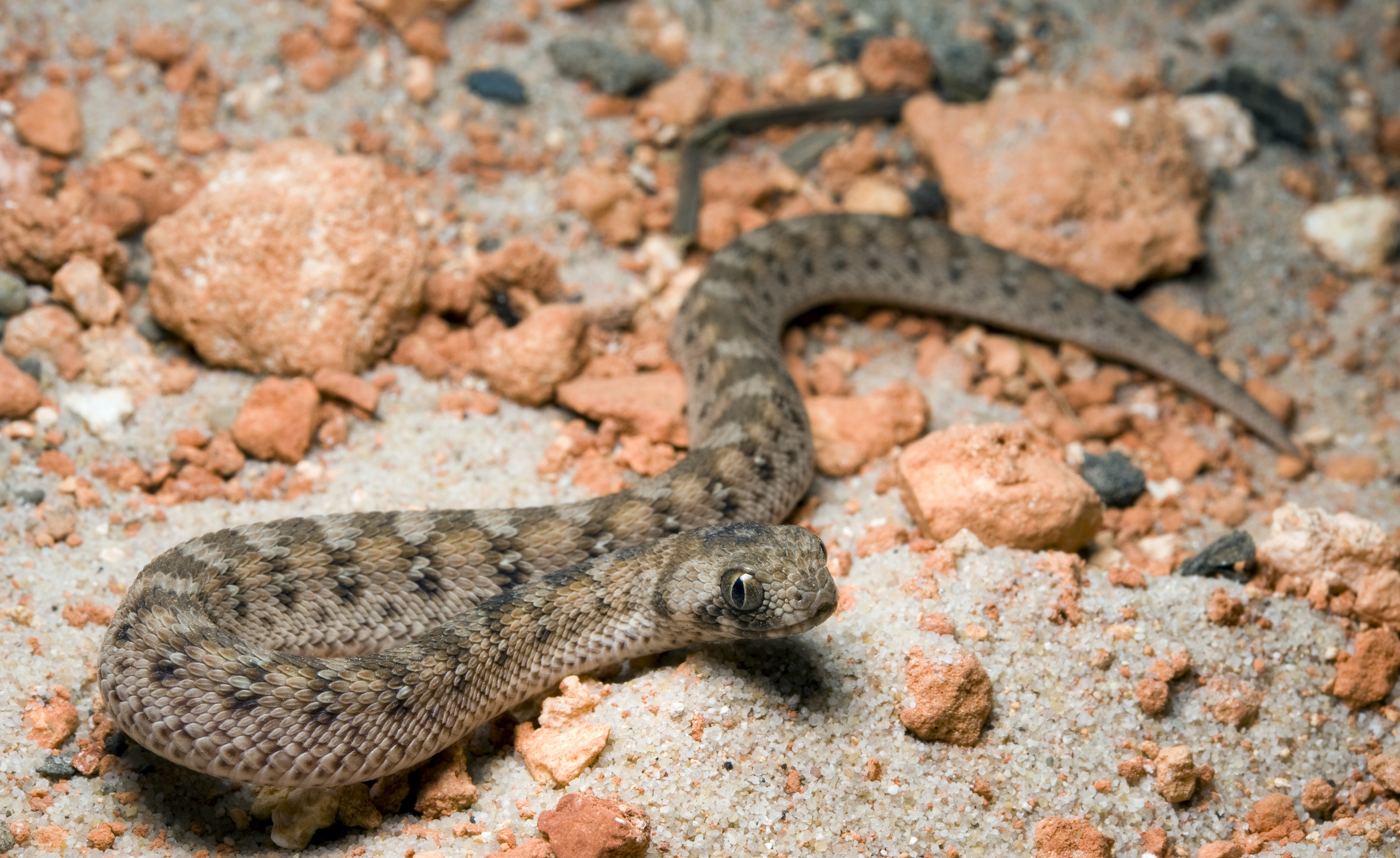
Saw-Scaled Viper
According to the Encyclopaedia Britannica, the saw-scaled viper could possibly be the deadliest of all snakes. Some scientists believe the viper may be responsible for more human deaths than all of the other snake species combined. The one bright spot? Its venom is lethal in less than 10% of untreated victims. Still, this snake, which lives in parts of Africa and the Middle East, is particularly aggressive and will bite repeatedly if it’s on the attack.
Asian Tiger Snake
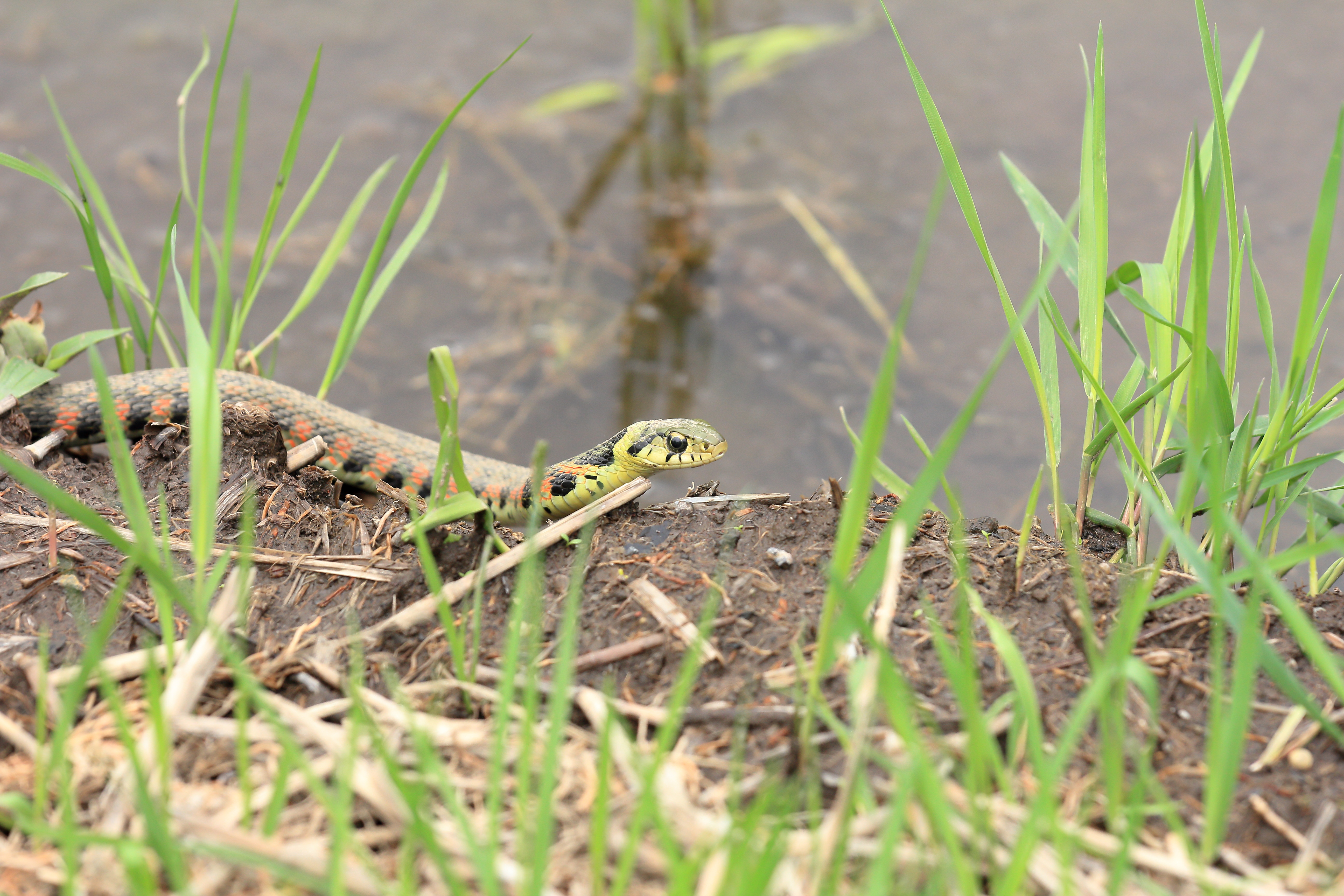
This tiger snake, also known as the tiger keelback and the yamakagashi, has a brilliant pattern on its body, making them easy to distinguish from similar snakes. As for their venomous qualities? They have poison glands on their necks, plus venom that is injected via their fangs. Before the introduction of anti-venom, these were killer snakes.
Inland Taipan
More poisonous than its relative, the Coastal Taipan, the Inland Taipan is found in more deserted and isolated places in Australia. It’s a shy and placid snake and, as such, has killed or harmed fewer people than the Coastal Taipan. All the same, the Inland Taipan has highly lethal venom, commonly thought to be more toxic than any other snake, mixing both neurotoxins and hemotoxins. This venom can kill within 45 minutes.
Coastal Taipan
The Coastal Taipan causes snake bites regularly in Australia, as it’s generally found in more populated areas. According to the Australian Museum, they’re nervous snakes and tend to be on high alert. If they sense movement in their vicinity, they’ll likely attack. When they do attack, their muscular yet lightweight bodies give them a wide striking range. They can hurl themselves forward or sideways, and can also leap quite high. They’re also speedy, and may get several bites in before a person is able to respond to their sneak attacks. How fun.
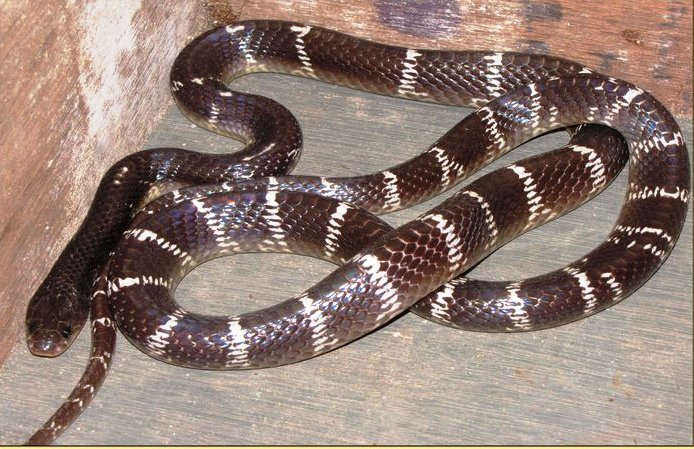
Common Krait
There are many types of Krait snakes. The Common Krait, in particular, is highly toxic and can also be sneaky, making it one of the most feared snakes in India. This snake can kill a human while he sleeps because a bite is fairly painless.
King Brown Snake
The King Brown snake, also called the Mulga snake, is found all over Australia. They aren’t as toxic as some snakes but they have a lot of venom, meaning they can still pack a big punch. According to Australian Geographic, Mulgas are so aggressive in their biting tactics that they’ll hang on to their victims — continuing to chew on them — as they inject large amounts of their highly toxic venom into the body. This venom destroys blood cells and adversely affects the muscles and nerves.
Diamondback Rattlesnake
Both the Eastern and Western Diamondback Rattlesnake are worth avoiding. Yes, these are the guys that shake their tails, creating a rattling sound that warns you to back off. And with anti-venom treatment, humans are usually fine. But if you’re stuck in an isolated area without access to that anti-venom, you’re toast. Their venom contains potentially deadly hemotoxins.
Black Mamba
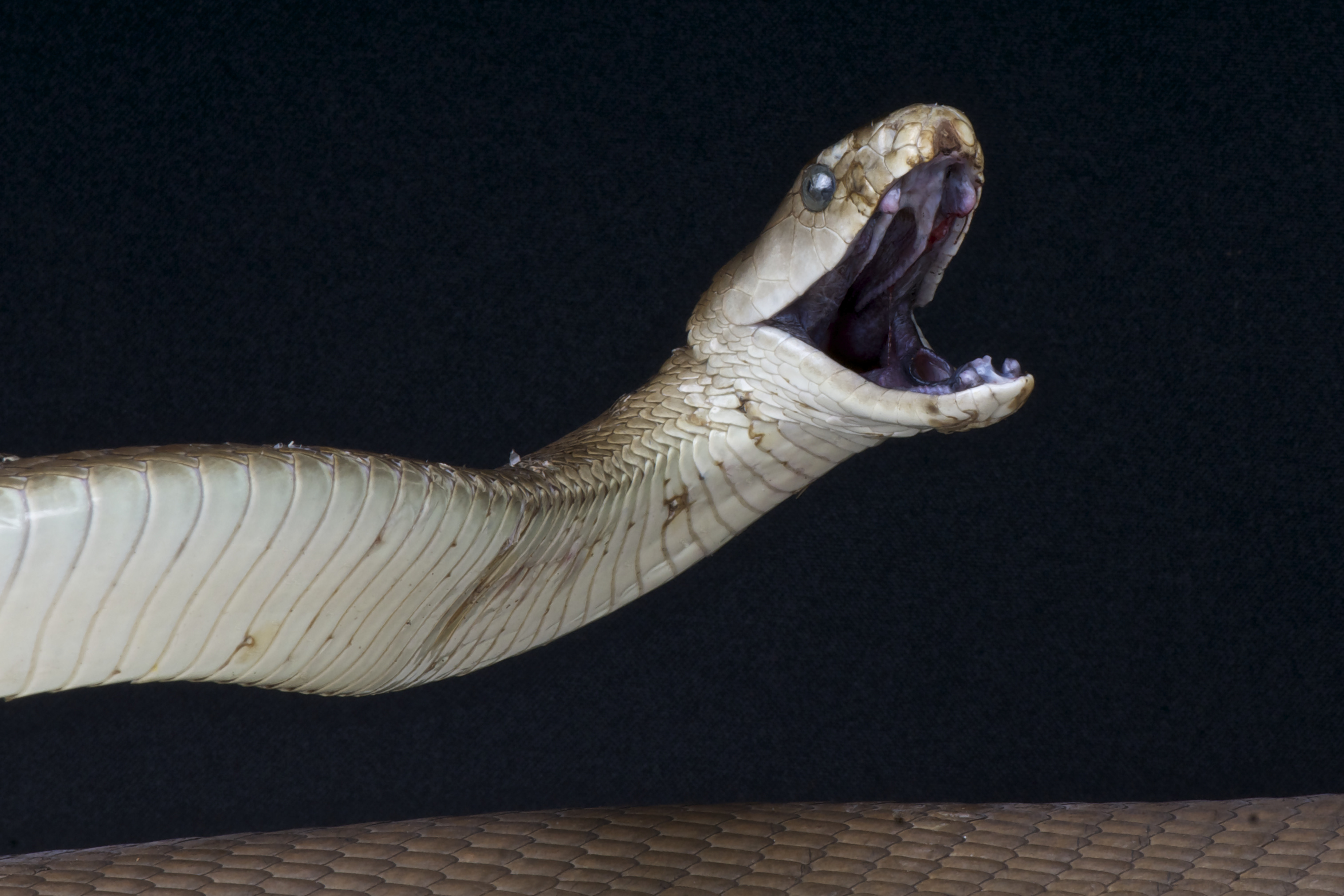
The Black Mamba is named not for its body color but for the color of the inside of its mouth, which you don’t want to see because that means it’s in attack mode. Bites from this African snake that are left untreated are fatal within 20 minutes. Since they strike in areas of Africa where there’s still not a lot of anti-venom treatments available, people still die from Black Mamba bites today. The heads of the Black Mamba are even “coffin-shaped,” in case you didn’t already get how deadly they are.
King Cobra
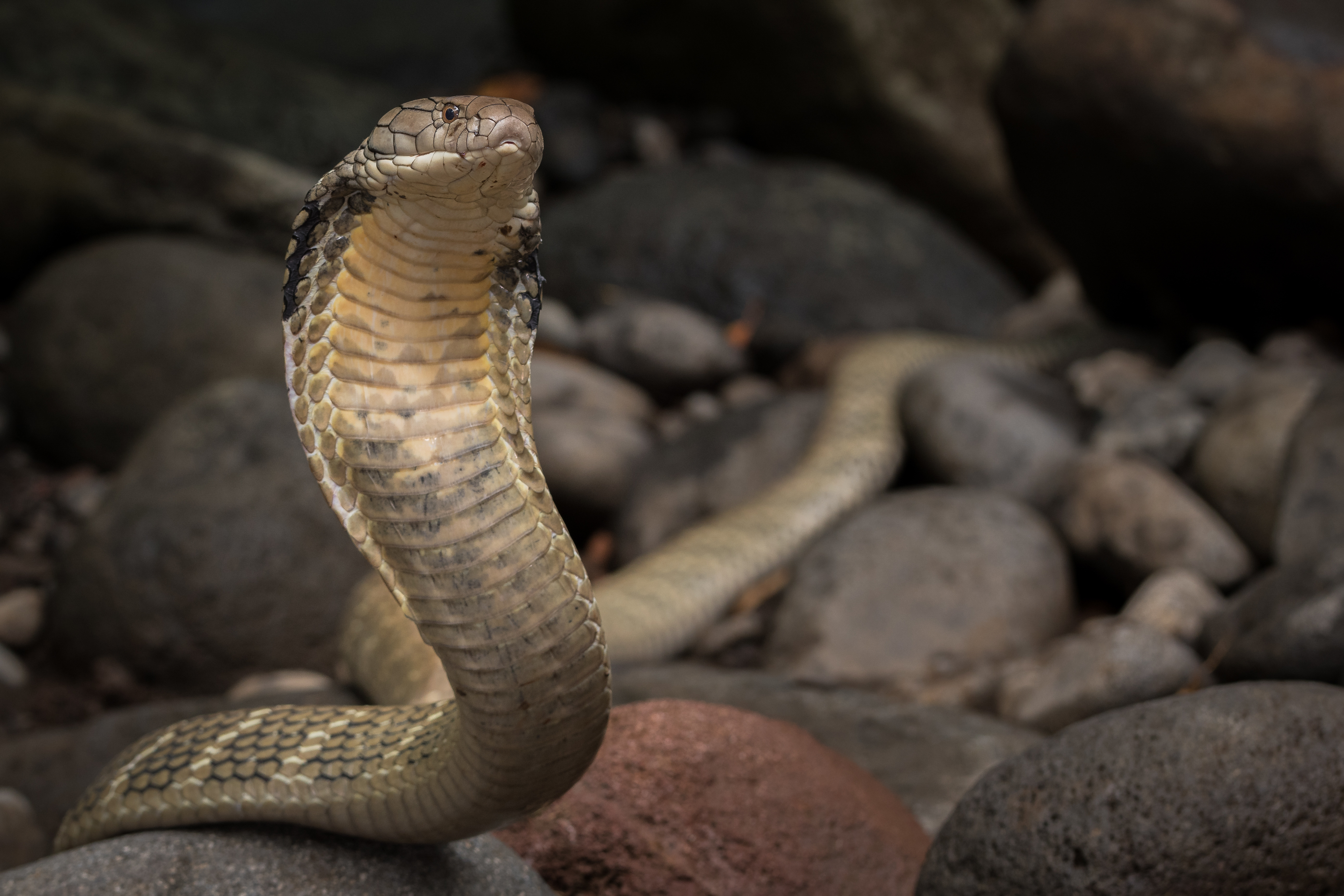
The King Cobra gets its name because it likes eating other cobras. It’s also the largest venomous snake in the world with an average length of 12 feet. And let’s not forget about how they can raise their bodies up to look even more menacing. King Cobras are found in India and other parts of southeast Asia, the Philippines and Indonesia. Bites from these snakes can take down an elephant.
Belcher’s Sea Snake
Also known as the faint-banded sea snake, Belcher’s Sea Snake is an aquatic reptile that is shy and only attacks humans when provoked. That said, you don’t want to be bitten by one, as a bite can result in paralysis and death.
Cone Snail
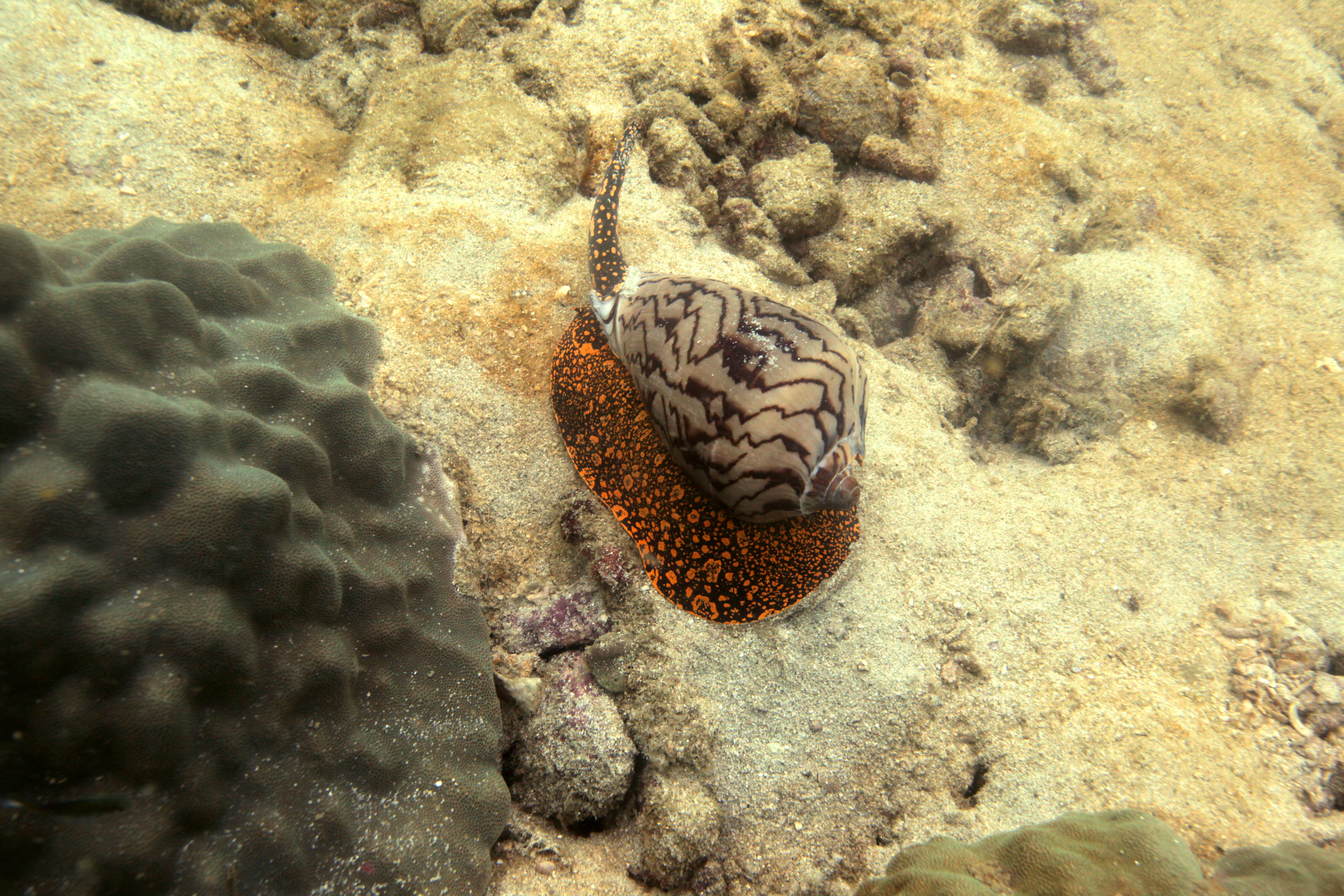
If you see a pretty shell that looks like the one below, don’t pick it up. It could sting you! The Cone Snail can cause paralysis, blindness and heart failure. The Geography Cone Snail is the most deadly of the bunch, according to National Geographic. Like other animals on this list, the venom of the cone snail has been looked into for its possible medical benefits, as the cone snail’s toxins have also been shown to be an effective painkiller.
Blue-Ringed Octopus
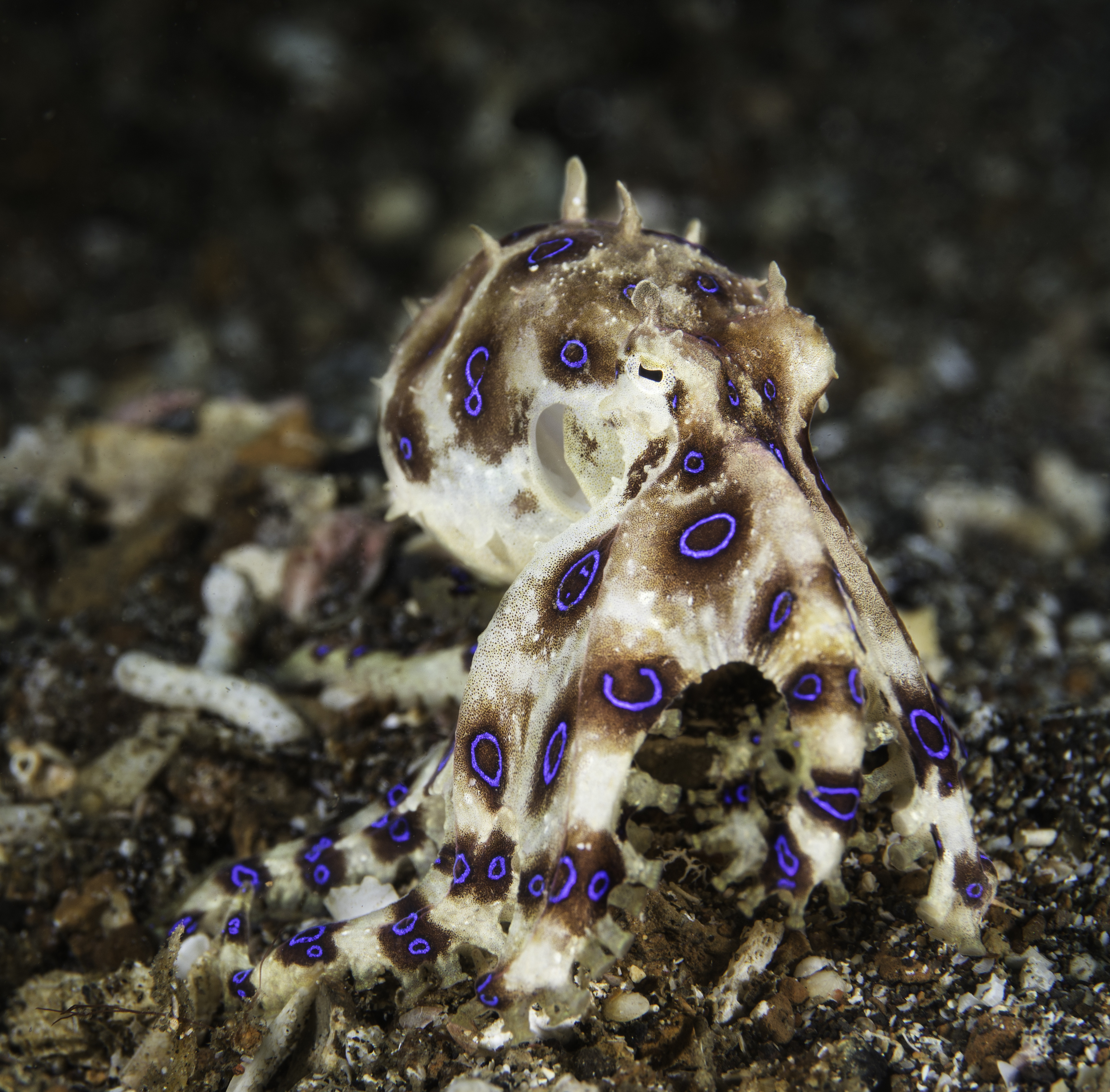
The Blue-Ringed Octopus is beautiful but you shouldn’t risk trying to pick it up. There is no treatment for a bite from this venomous little octopus found in the Pacific Ocean. Its venom can be 1,000 times stronger than cyanide poison. It can cause paralysis and, ultimately, death.
Tiger Pufferfish
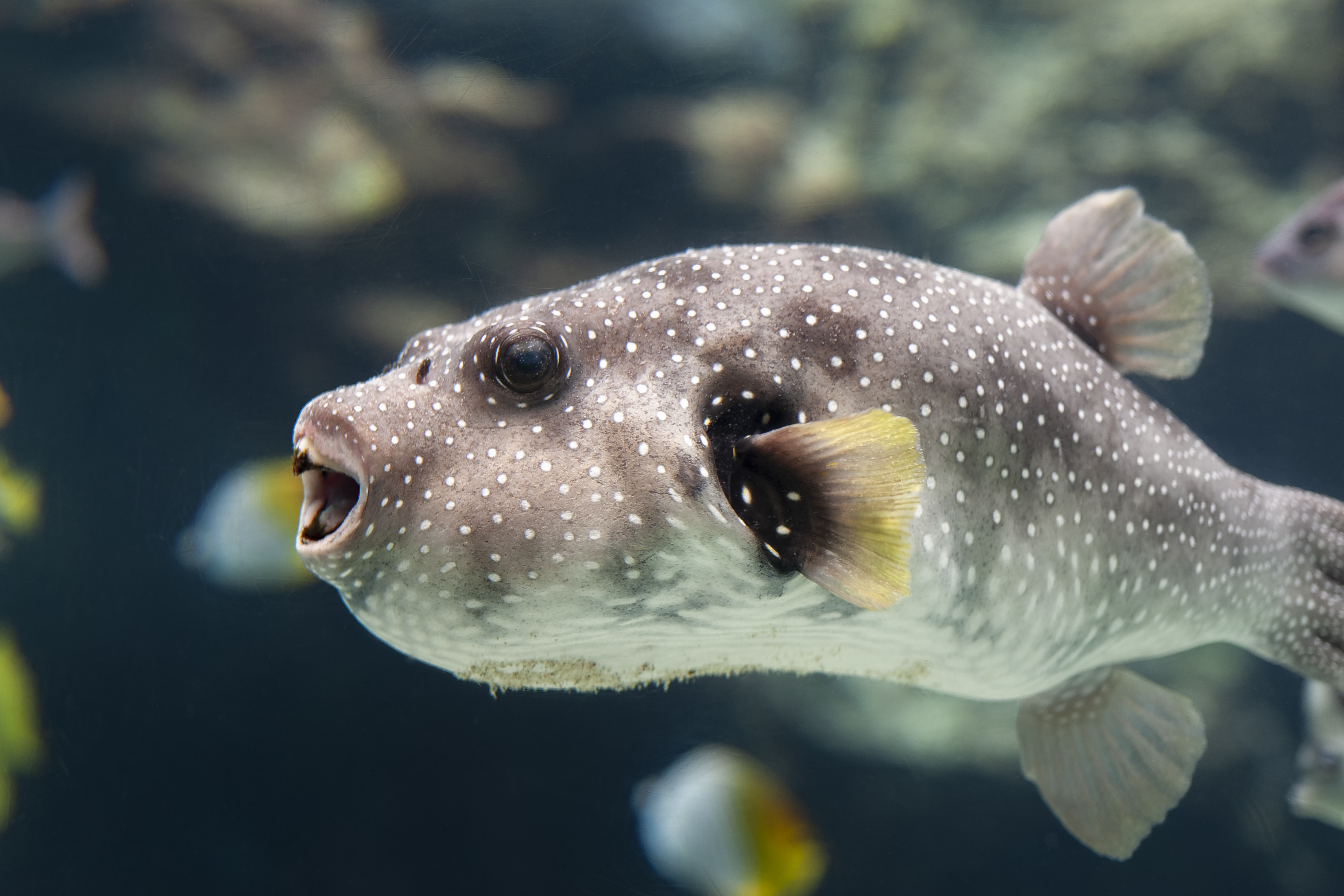
You might have heard of the tiger pufferfish or torafugu, an Asian delicacy that can also kill when not prepared properly. The intestines, ovaries and liver of this pufferfish contain a poison that’s 1,200 times deadlier than cyanide. The fish itself acquires its toxic nature from consuming bacteria that it then becomes immune to. This particular pufferfish is poisonous, not venomous, as it doesn’t actively attack humans. But it’s deadly all the same.
Stonefish
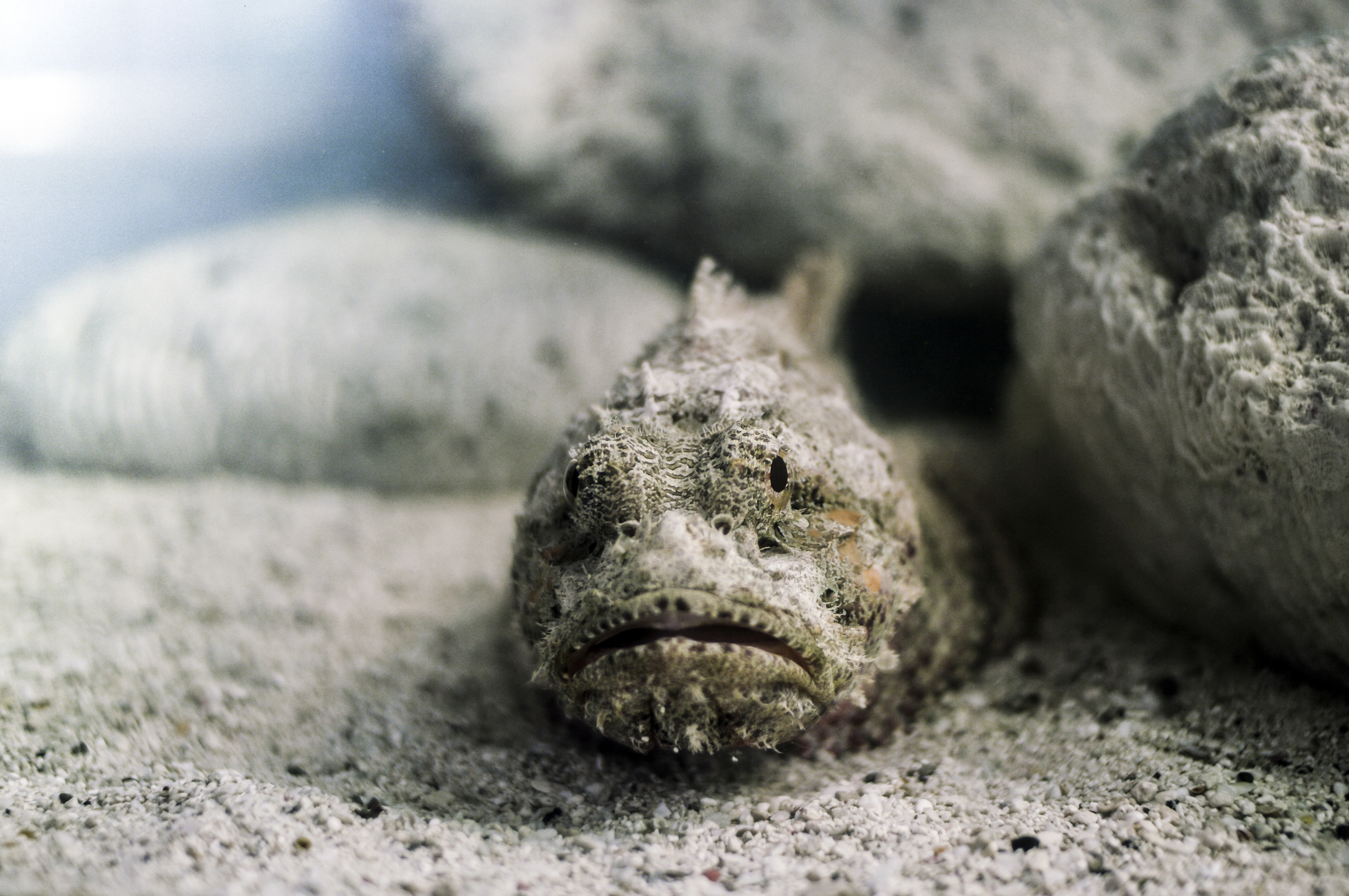
Don’t step on the stonefish! This rock-like creature blends into the bottom of the ocean floor so it can take on its prey unawares. If you stepped on a stonefish, it could potentially cause a huge amount of pain thanks to its poisonous spines. Luckily, there now an antidote that exists for this.
Box Jellyfish
If you want to know what the most venomous animal is on the planet, the box jellyfish is at the top of the list. While not aggressive, box jellyfish have long strings of stinging tentacles. They’re often found in clusters together and, because they’re nearly transparent in the water, swimmers can easily get tangled up in them, getting stung over and over. The sting causes rapid pain, necrosis, heart attacks and death. Some people who are stung are not even able to reach the shore before going into cardiac arrest and drowning. Happily, an antidote may have recently been found but needs further testing.
Sponsored Content

